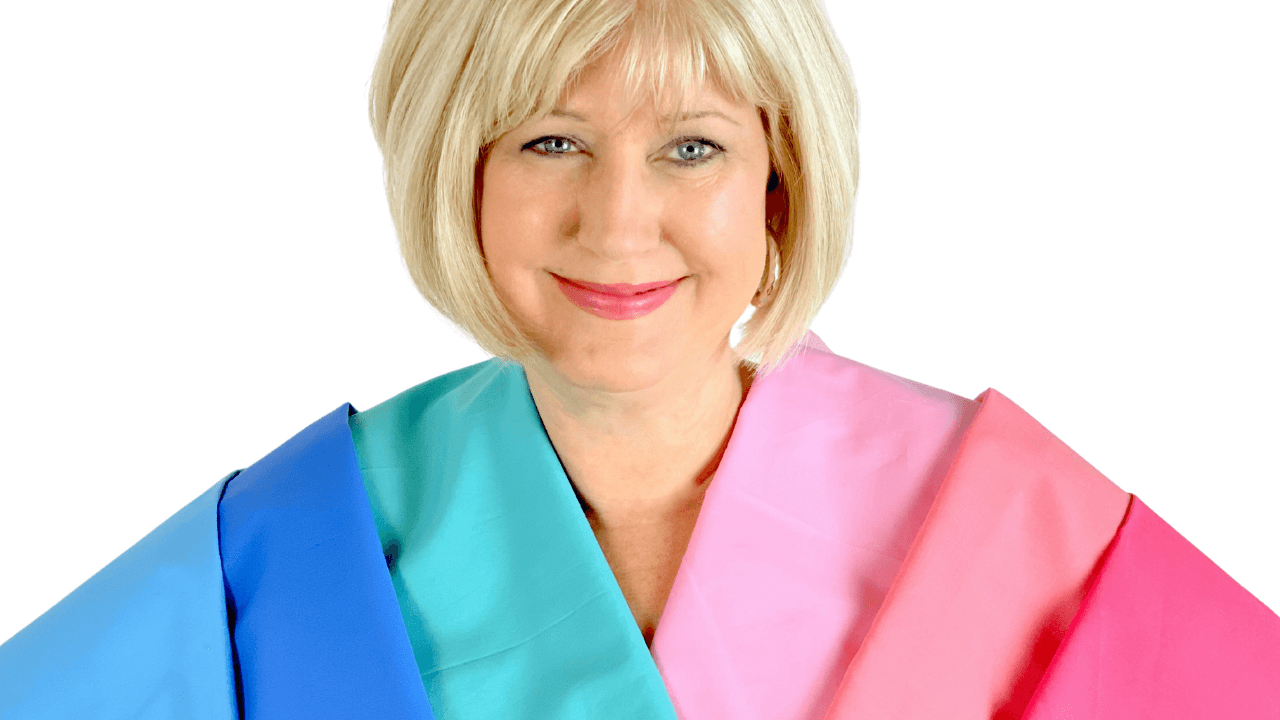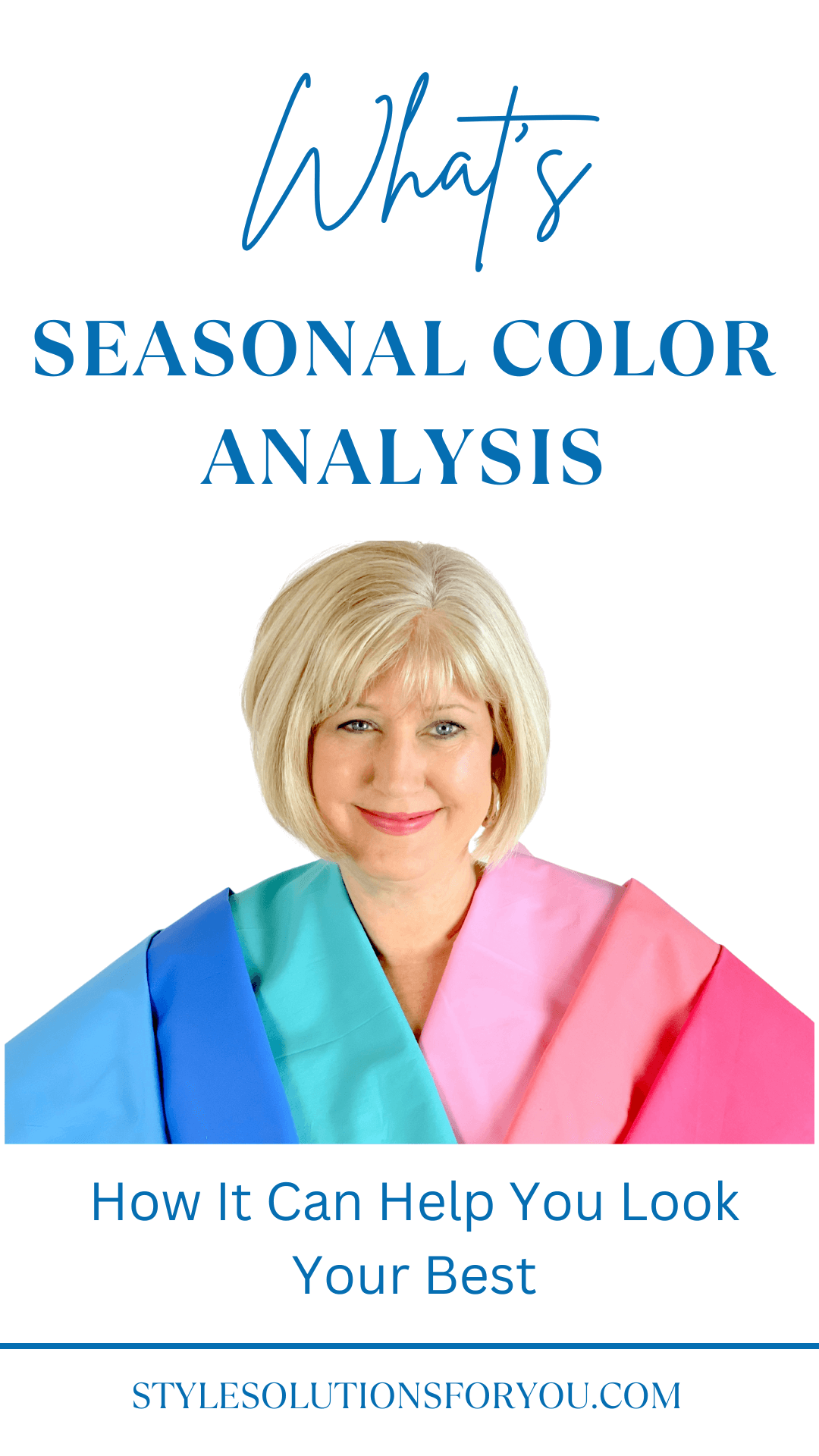
How It Can Help You Look Your Best

????????????????????Have you noticed that you look fabulous in some colors, while other colors are unflattering? If you have wondered why, then personal color analysis can provide the answers you want.
Color analysis has proved that wearing the right colors can brighten your skin and make you look younger and healthier. It?s because the colors you wear reflect on your face either in a positive or negative way.
Personal color analysis will identify the colors that are the most flattering on you so you can look your very best!
Understanding Color Theory
Before you can understand how seasonal color analysis works, let?s talk about color theory and the three aspects of color.
Color theory is a combination of art and science used to determine what colors look good together to achieve color harmony.
According to color theory, each color has three properties:
? Hue (Temperature: warm, cool, or neutral)
? Chroma / Intensity (Clarity: ranging from bright and clear to soft and muted)
? Value (Depth: ranging from light to dark)
1. Hue and Temperature
Hue simply means what color it is. Some colors are warmer and others are cooler, which is the color?s temperature or undertone.

Every color will be either warm, cool or neutral. Warm colors are yellow based and include red, orange and yellow and cool colors are blue based and include green, blue and violet.
A neutral color is balanced ? neither warm nor cool. Examples are true green which consists of yellow and blue in equal parts and true red which contains neither blue nor yellow.
2. Intensity (Clarity or Brightness)
Intensity means a color?s saturation, clarity or brightness. In other words, how clear or muted a color is. You can change the composition and intensity of a color by adding other colors.
A pure color is saturated and bright, like the color wheel.
A tinted color has white added to soften it and make it less intense.
A toned or muted color has grey added to soften and dull it.
A toasted color has brown added to warm and darken it.
A shaded color has black added to darken it and make it deep and rich.
3. Value (Lightness or Darkness)
Value represents the depth of a color or simply how light or dark a color is.
Light colors have white added to them which are called tints and dark colors have black added to them which are called shades.
Now let?s discuss how seasonal color analysis works and how it uses the principles of color theory.
What?s Seasonal Color Analysis?
Seasonal color analysis is a scientific process that uses color theory to evaluate your natural coloring and determine a color season, or set of colors, that is the most harmonious.
During a personal color analysis, your skin, eyes and hair will be analyzed and evaluated.
A trained consultant will determine:
- Your temperature - if your skin is warm, cool or in the neutral range
- Your intensity - if your coloring is bright, muted or in between and
- Your value - if your overall coloring is light, medium or dark.
During your in-person or virtual color analysis, your face is compared to special-coded colors to match your natural coloring to a season with similar colors.
The goal is to match your coloring to colors with similar temperature, intensity and value. Your most flattering colors will be the colors that are in harmony with you.
Your coloring will fall into one of four main season categories: Spring, Summer, Autumn or Winter.

?????????????????????????These color families are named after the seasons in nature because each season has colors that we associate with them. We associate the bright greens and yellows with spring, the tranquil blues and greens with summer, the earthy oranges and greens with autumn and icy white and blues with winter.
The concept of seasonal colors based on your skin, eyes and hair became popular in the 1980?s. Unfortunately, the color analysis process was oversimplified with generic color charts when it was introduced to the masses.
Were you incorrectly typed back then? I was!
Many were giving advice about color analysis, but they didn?t understand the color properties they were looking for. Unfortunately, I have had countless clients who were incorrectly classified and have been wearing the wrong colors their entire lives.
Seasonal Color Analysis Has Improved
Our human coloring is so diverse that color consultants realized that everyone does not fit into four color seasons.
Over the years, color analysis methods have greatly improved from the ?over-simplified? four season approach to more refined and scientific methods with 16 or more color seasons.
There are various color analysis systems being used today, but I believe the 16 season method is one of the most accurate and I use it for my color consulting practice. Once I analyze a client?s coloring and determine the sub-season that?s the best fit, I can customize their seasonal color fan to their very best colors.
Overview of the 16 Color Seasons
Here?s a simplified explanation of the 16 different color seasons. There are four ?true? color seasons based on the original color seasons containing colors with similar undertone and intensity.
Spring (Warm and Light) - Spring is warm, light to medium and clear.
Summer (Cool and Light) - Summer is cool, light to medium and soft.
Autumn (Warm and Dark) - Autumn is warm, deep and soft.
Winter (Cool and Dark) - Winter is cool, deep and bright.
There are six color variations, which bridge the ?true? color seasons.
The Light colors flow between Spring and Summer.
The Soft colors flow between Summer and Autumn.
The Deep colors flow between Autumn and Winter.
The Bright colors flow between Winter and Spring.
The Warm colors flow between Spring and Autumn.
The Cool colors flow between Summer and Winter.
Each color season category has the ?true? colors and three additional color variations as follows:
True Spring, Light Spring, Warm Spring and Bright Spring
True Summer, Light Summer, Cool Summer and Soft Summer
True Autumn, Soft Autumn, Warm Autumn and Deep Autumn
True Winter, Cool Winter, Deep Winter and Bright Winter
For more detailed information about the 16 color seasons to color analyze yourself, you can download my Color Season Guide.
Why Does Color Analysis Matter?
Wearing colors that flatter you is the easiest ways to improve your appearance and boost your confidence.
Discovering my best colors was life changing! I trained to become a Color Consultant because color analysis had such a positive impact on my life.
In addition to looking better, here?s more benefits you get from seasonal color analysis.
- You will shop with confidence because you know the colors that suit you.
- You will identify your best colors quickly, so you can shop faster and more efficiently.
- You will save money by eliminating shopping mistakes.
- You can create a mix and match wardrobe, so dressing is easier and quicker.
Are you interested in giving color analysis a try? I hope so.
What You Need to Know First
Since color analysis is a monetary investment with the professional fees and subsequent clothing purchases, you want accurate results from a trained and experienced color consultant.
Since there is no standard training or degree required to market oneself as a color analyst, you need to do some research before booking your appointment either in-person or online.
Here are a few questions to ask first.
What color analysis method do you use?
All color analysis systems are not the same as some are more sophisticated and complex than others. A color analysis method using your natural coloring will give you the best results. You need to choose a color system that you understand so you can identify your best colors when shopping.
Do you have formal training?
Some call themselves color consultants and are doing online color analysis even though they have no formal training. Reading information on the internet is not the same as completing an AICI certified color analysis program.
How much experience do you have?
Check online for customer reviews, especially on google, to let you know how long they have been in practice and if their customers were pleased with the results.
How does your in-person color analysis work?
Do they use special color drapes in a neutral setting with natural light? Beware of those who drape everything with grey drapes and use bright lights. I have had numerous clients who received inaccurate results in this setting because the grey creates a cool light that distorts your coloring.
How does your online color analysis work?
Online color analysis is different and more difficult than in-person color draping. In 2020, everyone started doing consultations online even though they had no training for doing them.
They should have a process to analyze your coloring to provide the most accurate results. You should receive a detailed explanation on why the colors work for you, not just because they think certain colors look best. Beware of Zoom color consultations because bad artificial lighting can give you inaccurate results.
Doing a little research first will give you confidence in booking your personal color analysis. I hope this post has been helpful as you explore seasonal color analysis.
More ways I can help:
Download my Color Season Guide to help you discover your best colors.
Learn about my online color analysis process and how to get started.
Get your seasonal color fan, the ultimate shopping guide, to compare colors easily.
Check out my additional posts about color and color analysis
Like this Article? Save It on Pinterest!

?
????????????????????????